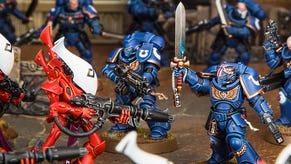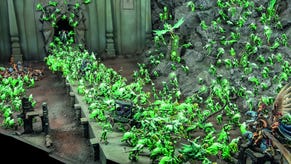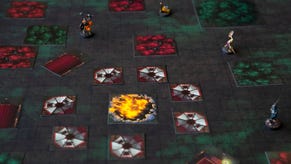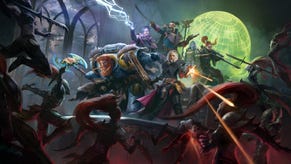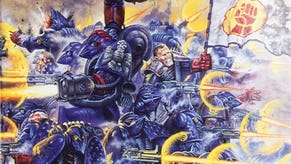Warhammer 40,000: Leviathan review - a big box of brilliant minis, left conflicted by a dash of corporate identity crisis
Is 10th Edition’s launch box worth it?
A new edition of Warhammer 40,000 is upon us and, as foretold by ancient prophecy and Games Workshop’s very predictable release cycle, that means that the traditional Bigge Box is arriving. Named Leviathan, after an all-devouring Tyranid Hive Fleet, it sees 40k poster boys the Space Marines facing off against the swarming alien threat. These Warhammer 40k launch boxes are always highly anticipated releases, with a heap of new miniatures and the first chance to grab the latest ruleset, but is it worth braving the soon-to-be-heavily-taxed GW website to pre-order a copy?
To be completely clear, this is a review of the Leviathan box itself and not the 10th Edition 40k rules. That will come later after the game is in the wild and I’ve had the opportunity to play a bunch of games against different opponents. With that out of the way, let’s crack on!
It’s important to note, especially for folks who aren’t necessarily familiar with how GW launches new editions of its flagship games, that Leviathan isn’t a starter box. Yes, there are two forces, a set of rules and even some really handy mission cards, but that’s it. There’s no beginner guides, no gently teaching you how to play the game and certainly no terrain, dice, measuring implements or any of the other paraphernalia required to play a game of Warhammer 40k. If you’re new to the hobby and want an all-in-one place to start, you’ll be better off waiting for the inevitable starter set(s) GW will release in the future.
The miniatures are, as you’d probably expect, absolutely gorgeous. The 25 Space Marine and 47 Tyranid minis are mostly infantry of various shapes and sizes, with the Marines getting a stompy Ballistus Dreadnought and the Tyranids some larger monsters in the form of a Screamer-Killer, a Psychophage and a Neurotyrant. As well as being monopose, they’re all push-fit, meaning that they can be assembled without glue. For the most part, they do so quite magnificently, though there will be some occasions where some trimming of pegs and plastic glue is required to get the most seamless fit, and most hobbyists will want to glue them for stability. It is nice to be able to quickly throw them together for a few games and worry about properly glued assembly later.
All of the minis in Leviathan are completely new, though there is a strong feeling of updated classics running through the selection.
All of the minis in Leviathan are completely new, though there is a strong feeling of updated classics running through the selection. The Ballistus Dreadnought is the Primaris upgrade to the old lascannon and missile launcher-armed Dreadnought, bringing it in line with the melee-flavoured Brutalis and all-rounder Redemptor models, while the Sternguard Veterans and assorted Terminator-armoured models are new and improved versions of Space Marine stalwarts. The Terminator squad in particular embody an “if it ain’t broke, don’t fix it” philosophy and feel very much like the minis we know and love, just upscaled to fit in with the Primaris Space Marines of the past few years. It’s less pronounced on the Tyranid side, who have a lot more brand new beasties, but the Screamer-Killer and Termagants both have that feeling of just being the way they should have always been.
In addition to the miniatures themselves, there’s also a transfer sheet for the Space Marines. It’s normally something not worth mentioning, as a standard inclusion for most iconography-heavy GW game factions, but this one is brand new and completely redesigned for the new edition. It features symbols for six different Space Marine chapters - Ultramarines, Dark Angels, Blood Angels, Space Wolves, Imperial Fists and Raven Guard - along with generic squad markings and such, and has a lot more variety than we’ve seen before. There are some beautiful variant chapter symbols, often in gold, that are perfect for adding a bit of pizazz to your veterans and special characters. I foresee much frenzied trading of these between Space Marine players in the future.
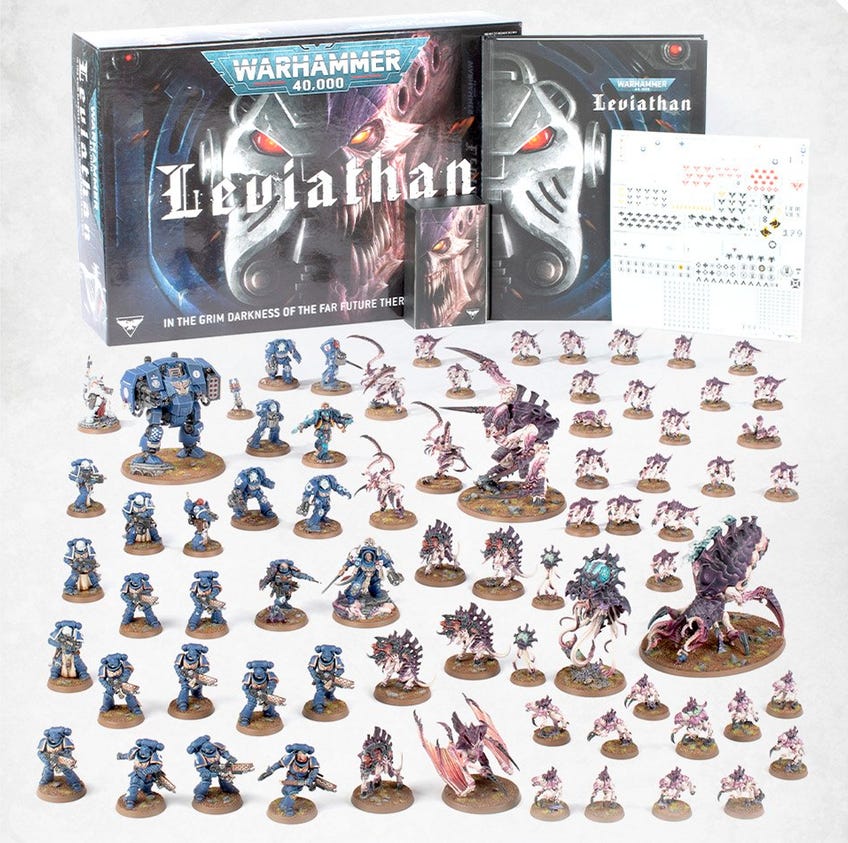
As well as miniatures and the Leviathan book, you also get a deck of Chapter Approved mission cards. The idea is that, rather than a list of set missions to choose from, players draw cards to determine deployment and primary and secondary objectives. While the actual quality of the games put together with the deck is something to be covered in the rules review, previous GW products along these lines have been very well received, and mission cards are something that I’m generally in favour of. I’m really happy with their inclusion in this set and the indication that it’ll be the standard going forward.
Despite the fact that GW will shortly be asking you to put down money for this box, there’s still a lot we just don’t know about Warhammer 40,000: 10th Edition.
Last, but not least, is the hefty hardback itself. Once again, it’s absolutely up to the quality we’ve come to expect from GW. The art and photography are beautiful throughout and it seems solidly bound. The written contents, however, are where it starts to fall apart. To explain why, I feel that I need to give some context.
I’m writing this Leviathan review in the week between the first early copies - those going to press, video creators, hobby influencers and the like - being shown off and the box’s two-week pre-order window opening. Despite the fact that GW will shortly be asking you to put down money for this box, there’s still a lot we just don’t know about Warhammer 40,000: 10th Edition, its forthcoming starter sets and separate releases for the contents of the Leviathan box.
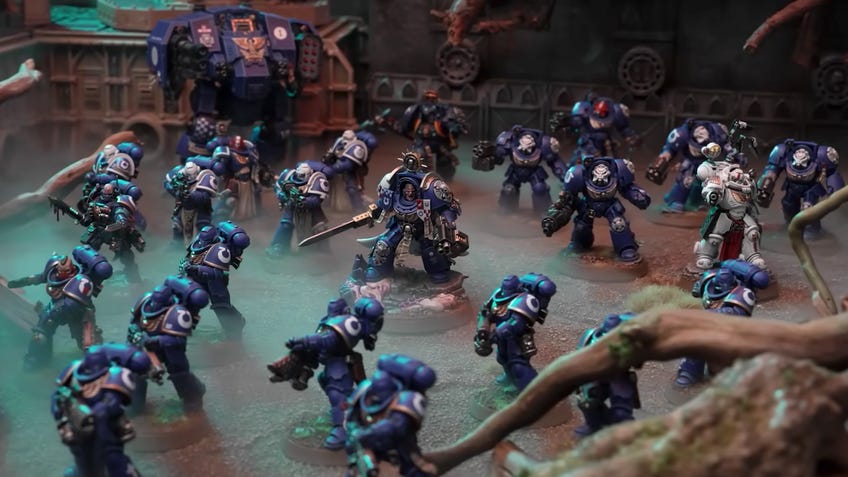
What we do know is that much of the contents of the book will be released for free - or, in one case, has already been released. The 60 pages of Warhammer 40k’s core 10th-edition rules are available to download now from the Warhammer Community website. The rules for the new Combat Patrol format will also be available before launch.
The Leviathan rulebook feels like a cynically manufactured Product, exacerbated by the, quite frankly criminal, lack of credits.
With the first half of the roughly 400-page tome included in Leviathan taken up by existing background information, that really only leaves the Crusade section. This is, by far, my favourite part of the whole book. As a huge fan of both the ongoing 40k narrative and the Crusade campaign format, I was really excited to dive into this section - and my initial readthrough has left me really excited for Crusade in general and the specific Tyrannic War campaign featured.
The problem is that GW has already announced that Crusade: Tyrannic War will be available as a separate release. I’d far rather have it as a standalone book. It’s the same with the core rules. Even though they are free to download, I’ll happily pay for them in a convenient physical format - but a 60-page section in a massive, 400-page hardback isn’t convenient. Likewise, the whole point of Combat Patrol is that you don’t need to take loads of printed material with you to games. Do you want to lug around a huge hardback just for 11 pages of Combat Patrol rules, when can you just use your phone or print out the PDF?
Leviathan isn’t a starter box, yet half of the book is broad-strokes background that most of the target audience already knows. The single largest chapter is called “Forces of the 41st Millenium” and has an overview of the myriad factions of 40k. However, half of each entry is a shameless two page advert for the Combat Patrol box. It’s a total mismatch, disparate parts shoved together between pretty covers.
The result is that it feels like a cynically manufactured Product, which is only exacerbated by the, quite frankly criminal, lack of credits, with everything being attributed to a nebulous “Warhammer Design Studio”. It’s a big book in a new edition launch box because new editions need launch boxes with big books. It’s there to get people hyped up and rush out to order it for fear of missing out on being part of the moment. GW could have taken the exact same contents, split it up into a series of softbacks (with limited edition covers, in a nice slipcase, to keep that important collector cred) and made the whole thing a much more useful package. Half of it would still only be skimmed, at best, by most purchasers, but at least it wouldn’t be weighing down the rest of it.
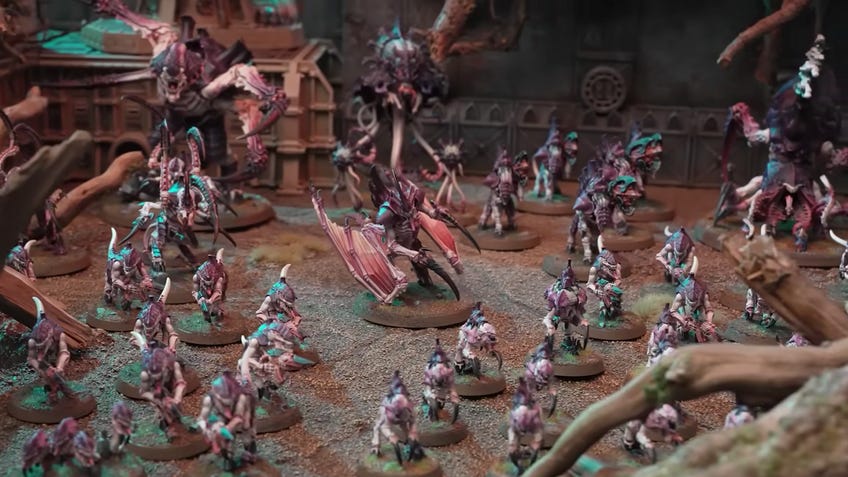
The worth of Leviathan really comes down to whether or not you want the bulk of the miniatures, which will undoubtedly prove to be excellent value for money compared to eventual separate releases. With 72 minis in this £150 box, you’re paying a little more than £2 per model, which is as cheap as GW gets. Even if you tossed out all the printed materials without ever opening them, that’s a great price for some lovely miniatures. Getting the Chapter Approved cards, in particular, just seems like a bonus. In terms of grey plastic goodness, it’s absolutely worth it.
Overall, I’m left feeling somewhat conflicted. I love that Games Workshop is making much of 10th-edition 40k freely available, but at the same time it renders much of the Leviathan book’s contents inconvenient at best, redundant at worst. There’s a mismatch between the design philosophy of 10th Edition and the product used to launch it that seems to echo deeper rifts within the company. I’m optimistic about Warhammer 40,000’s 10th edition itself, but I’m concerned about Games Workshop becoming an increasingly closed-off, faceless corporation.
Warhammer 40,000: Leviathan will be available to pre-order via Games Workshop's online store from 10am BST/PT this Saturday, June 10th.



